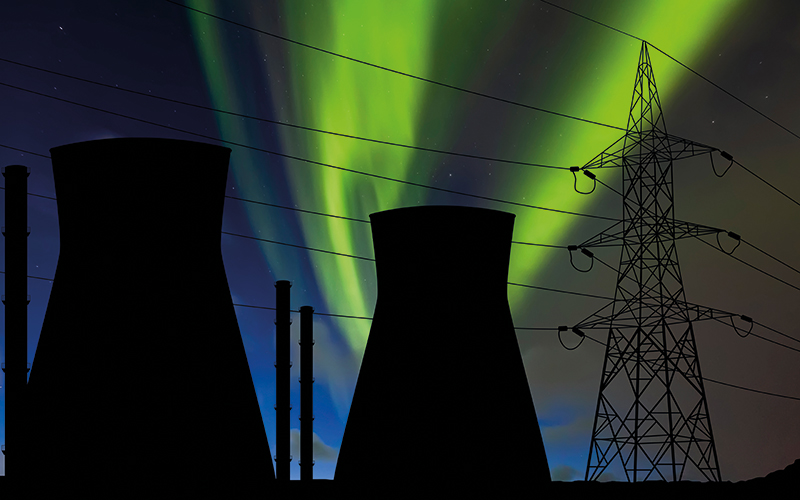Can Norway call itself a leader of the energy transition?
Norway has ambitious emission reduction targets but is not on track to meet them, says DNV’s Programme Director of Energy Transition, Sverre Alvik

Since the 1970s, Norway has exploited the abundant oil and gas on its continental shelf, contributing to budget surpluses and the development of its sovereign wealth fund. It is the world’s fourth largest gas exporter and 11th largest oil exporter. However, fossil fuels are losing their dominance, and by mid-century half of energy demand will be met by non-fossil fuels, impacting the country’s balance sheet. Norway’s oil and gas revenues were US$34bn in 2020, but, given equal prices, this will fall by 63% by 2050.
Well positioned for green shift
Half a century of offshore experience and a strong fiscal position means Norway can successfully adapt to the energy transition. It is especially well positioned in floating offshore wind (FOW) power production, and Hywind Tampen in the North Sea will be the world’s largest FOW development when it is commissioned later this year. DNV forecasts that, by 2050, the world will have installed just over 260GW of FOW – corresponding to 3,000 Hywind Tampen fields – of which almost 7GW will likely be in Norwegian waters and 40GW in the rest of Europe. With its offshore gas and oil experience, Norway has competence in subsea, anchoring, floaters and much of what is needed to develop and scale FOW.
Carbon capture and storage (CCS) will play a major role in decarbonising the global power system and heavy industry. In our Energy Transition Outlook 2021, we forecasted that 26% of natural gas in Europe will be decarbonised by 2050, either as hydrogen or via post-combustion CCS in power and industrial plants. More than 90% of Norway’s gas is exported to Europe. It can either be decarbonised at point of use, or on the Norwegian Continental Shelf for subsequent export in a decarbonised form, such as hydrogen. Norway is also well positioned to receive CO2 captured by European industry or power plants and store it in reservoirs under the seabed.
Norway plays an important global role in maritime transport and innovation. Shipping is a hard-to-abate sector, with direct electrification expected to play only a minor role beyond the short-sea segment. The International Maritime Organization and the shipping industry are initiating a massive R&D effort to decarbonise maritime fuels. Norway has extensive experience and a lead in liquefied natural gas, batteries and hydrogen, including hydrogen fuel cells, for domestic short-sea shipping. Extending this leadership into research, piloting and development of low and zero-carbon fuels, batteries and related infrastructures for deep-sea shipping is a promising opportunity.
More needs to be done
While Norway is well-positioned for the transition, that does not mean it is leading it. The country has ambitious climate targets that involve reducing emissions by 55% compared with 1990 levels by 2030, with a further reduction to net zero by 2050. DNV, however, finds that Norway will likely achieve a 24% reduction by 2030 and a 79% reduction by 2050. We also argue in our Pathway to Net Zero report, which lays out what we believe to be the most likely scenario for the world in terms of reaching Paris Agreement goals, that richer regions such as Europe (including Norway and the UK) will need to hit net zero before 2050. Norway is thus likely failing on its goals and falling short of what is required.
Political decisiveness is crucial
Norway’s motivation to hasten its transition is not just climate sensitive, but also economically imperative. Its domestic supply is dominated by hydropower, which produces a surplus that can then be sold to other countries. However, to supply the Norwegian Continental Shelf with electricity while also supporting green industrial growth, Norway will likely have to import electricity between 2025 and 2035. Even with the assumed buildout of offshore wind for energy export, the modelled 11 TWh/year in net electricity exports by 2050 will only translate to an additional income of US$614–717bn per year. In simpler terms, Norway needs to put in place the policy framework to rapidly increase the buildout of offshore wind.
Speeding up the transition
While Norway has the potential to transition faster, Denmark is putting its decarbonisation pledges into action. Its energy islands show the scale of ambition required to meet the Paris targets and, so far, are a successful demonstration of how public opinion, policy and technology can be galvanised to transition more quickly.
By Sverre Alvik, Programme Director Energy Transition, DNV
Image credit | Getty






Follow us
Advertise
Free e-Newsletter